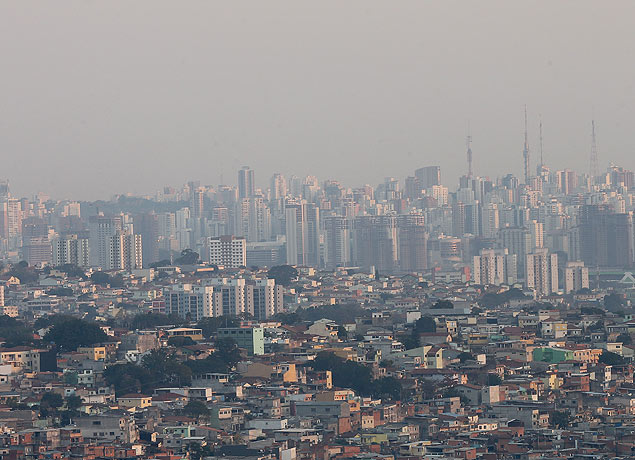Latest Photo Galleries
Brazilian Markets
12h03 Bovespa |
-0,14% | 129.028 |
16h43 Gold |
0,00% | 117 |
12h17 Dollar |
+0,39% | 5,0873 |
16h30 Euro |
+0,49% | 2,65250 |
ADVERTISING
With Little Rain, São Paulo Has Worst Air Quality in Seven Years
11/11/2014 - 09h09
Advertising
EDUARDO GERAQUE
FROM SÃO PAULO
The lack of rain, combined with low humidity and the stagnation of a mass of hot air above the state of São Paulo, mean that air quality in Greater São Paulo is currently worse than it has been since 2007.
Until October, at the 23 points of measurement, the "fine dust" pollutant (which affects the nose, throat and lungs) exceeded the limits considered healthy by the World Health Organization (WHO) on 1325 occasions.
According to the method used, the limits may be exceeded once a day. In 2007, this occurred on 1478 occasions.
The figures for this year show that the limits were exceeded simultaneously in various regions of Greater São Paulo.
This phenomenon may reoccur in the coming weeks, as the weather forecast predicts little rain for the entire São Paulo metropolitan area.
Folha based its survey on statistics from the Environmental Company of the State of São Paulo (CETESB), the state government's environmental agency.
The survey used a more rigid cutoff point for data regarding fine dust, which, though laid out in state legislation, has yet to be implemented.
The law establishes four limits, which should be gradually reached. Officially, this objective is not used by the administration of Geraldo Alckmin (PSDB).
The legislation does mention it as a goal to be achieved, but it does not define any specific date.
Specialists have criticized this, as in practice, the CETESB data indicates a less serious situation than when international standards are applied.
Nonetheless, the average dust levels in São Paulo are annually around 70% less than those recorded in the Chinese capital, Beijing.
The state environmental agency says that the approach of this report is "premature".
It argues that the air quality in 2014 is only worse than the previous three years, considering the number of times the current limits for "fine dust" were exceeded.
For the doctor Nelson Gouveia, from the University of São Paulo (USP), a specialist in the effects of air pollution, the current statistics show that "the levels of dust are stable, with a little fluctuation, but at a high level."
For Gouveia, the dust is currently one of the worst pollutants in São Paulo.
He is also concerned that there is no plan for when the more stringent methodology will be implemented. "The WHO is already planning to revise its own criteria," he said.
Translated by TOM GATEHOUSE
Read the article in the original language
| Robson Ventura/Folhapress | ||
 |
||
| This phenomenon may reoccur in the coming weeks, as the weather forecast predicts little rain for the entire metropolitan area |



